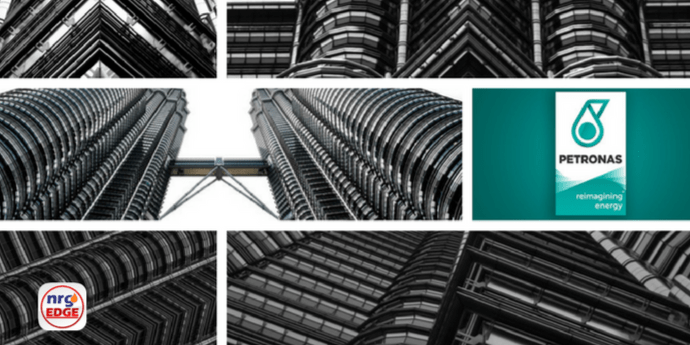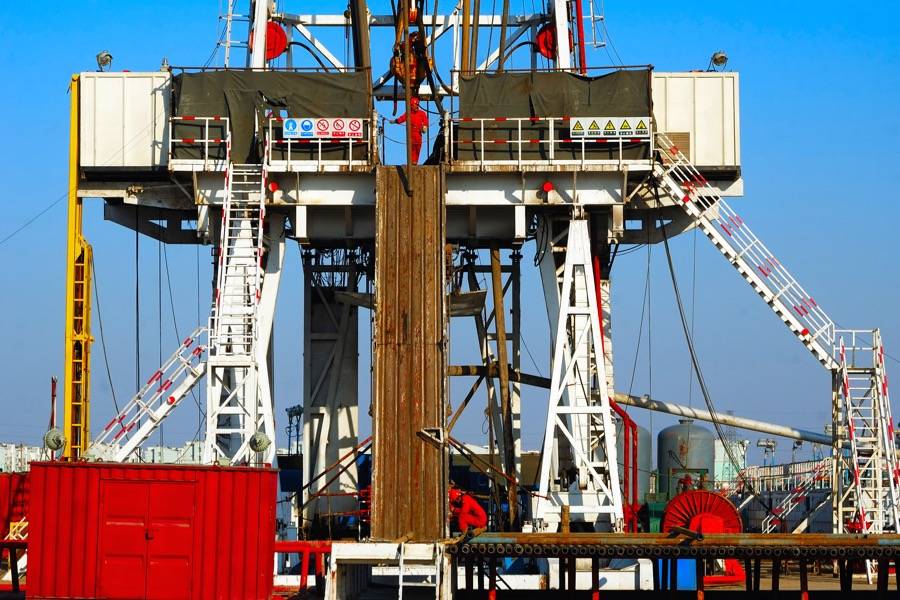Conservative estimates suggest that in the wake of oil prices crashing in late 2014, the Malaysian oil and gas services and equipment (OGSE) sector contracted by at least 11%. Analysis of overall financials for the OGSE sector by the Malaysian Petroleum Resource Corp, an agency under the Prime Minister’s Department, reveal that revenue for 2015 fell by 11%, while profits contracted by a severe 52.3%. Including companies such as MISC, Sapura Energy, Dialog, Scomi, Bumi Armada, the numbers for 2016 are not available yet, but a glance over the financial reports released for the bigger players indicate that while sector revenue will probably be down for the year, profits maybe be up, after aggressive cost-cutting that included a tide of retrenchments.
So what is in store in 2017 and beyond?
If we go by the health of Petroliam Nasional Berhad, better known as Petronas, the word seems to be “cautiously optimistic”. The guardian and bellwether of Malaysia’s Oil & Gas sector, Petronas is one of the few major integrated state oil companies that is holding up fairly well during the current on-going oil crises. Petrobras is engulfed in debt, as is PDVSA, while Pertamina appears to be struggling with corruption and clarity of its long term investment direction while select Russian entities battle being used as political tools. Full year 2016 revenue for Petronas fell by 17.3% from lower sales coupled with weak crude prices but profit was up by a whopping 28% to RM16.95 billion (US$3.82 billion), just slightly behind Shell’s own profit for 2016. For 2017, Petronas projects better times ahead, promising no more staff redundancies and bolstering defences by pegging its 2017 capex expenditure at US$45/b, while it prepares to focus on natural gas – both at home in Sarawak and Sabah, and abroad in its Canadian LNG export project, and the recent go-ahead given to its massive US$27 billion RAPID refinery and petrochemicals project.
However if oil prices fall any further or just lingers within the US$50-55/b range, the so called recovery being experienced now, may just stagnate or not be strong enough to re-boot the industry to its previous glorious days and create the jobs badly needed for Malaysia. The threat of market oversupply is still there as US shale oil continues to grow unabatedly. The reality is low oil prices for (much) longer. The future prosperity of Petronas would depend on how much it can increase its productivity and lower production costs. Petronas has moved very decisively and embarked on intensifying its internal cost competitiveness through better collaboration amongst other upstream operators in Malaysia through the CORAL 2.0 project, and is beginning to see lower cost scenarios for its well engineering programs already. On the new technology front, Petronas is collaborating with MIT Innovation Sdn Bhd (MIT) to promote a smart and efficient technology that significantly lowers drilling costs. All moves in the right direction.
The weak link to Petronas’s current cost strategy and competitiveness globally could however be its very own local supply chain. As Petronas tries to prosper in the current climate, the industry that supports it needs to be similarly positioned to do the same – efficient and cost competitive. With the exception of a few large players like MISC, Sapura Energy and Dialog that have the width and breadth to survive challenging conditions like in 2015 and 2016, further down the supply chain, the smaller players many of whom are just agents or third-party equipment representatives do not necessarily own technology, are extremely vulnerable to volatility. (Debt is a particularly pressing concern in this end of spectrum especially in the offshore segment, with players like UMW Oil & Gas, Dayang Entreprise and Perisai Petroleum Teknologi facing recent problems in renegotiating their debt incurred during the good times. Those who can’t keep afloat will be targets for acquisition or forced mergers, like the recent merger between UMW Oil and Gas, Icon Offshore and Orkim.) In a recent business seminar, Malaysia Petroleum Resources Corp (MPRC) senior vice-president Syed Azlan Syed Ibrahim said that “although we foresee 2017 will not be far off than 2016, I do not think it will be worse. This is the opportunity for players to make the hard decision to restructure or reform. That time is now. They (local oil & gas supply chain companies) need to do it now so that when the market goes back up they will be ready” Calls for consolidation amongst local companies, especially in the upstream segment will help strengthen the industry, allowing for greater combination of resources for increased technological innovation and value creation that is urgently needed for Petronas to be competitive locally and overseas. Less reliance on foreign US dollar denominated technology or service providers will help Petronas achieve its low cost operations goal.
As Petronas announces fewer projects in 2017 compared to pre-2014 levels, local service player will need to compete and work outside Malaysia for revenue and business growth. It will be useful here for the local oil industry to emulate the success in the Norway. As we have seen and witnessed the growth of Statoil, Norway’s national oil company, as a global player in the oil industry, it is backed-up with a group of highly matured and capable technology and services providers. The grouping is now known as Norwegian Energy Partners or NORWEP in short. NORWEP looks beyond the shores of Norway for new business, and compete for projects globally. It independently (without Statoil’s direct assistance) builds relations with other governments and strategically partners with other state controlled oil companies. To date, it has achieved a respectable track record in developing new technologies in enhanced oil recovery methods as well as strong health & safety in its operations.
Looking into the future of energy, the argument for diversification into how energy will be generated, distributed and utilised also seems compelling. Shell is convinced that the next phase of fossil fuel energy will belong to gas. Petronas is well positioned in the gas business, as it continues to be within the top 3 exporters of LNG globally with strong gas reserves and infrastructure locally as well as internationally, especially in Canada. However the argument for energy diversification goes further from fossil fuels. During the 2017 CERAWeek, the fossil fuel big annual conference, most speakers proclaim a long and prosperous future for their industry. But companies and countries that rely on oil and gas income are recognizing that renewable forms of electricity are gaining traction as prices come down and their popularity rises. Oil executives are adapting their portfolios to add cleaner fuels and moderating their rhetoric on climate change. “A low-carbon future will reshape the energy space. Some see this as a threat to our industry, but we should rather look for and act on the opportunities it offers,” said Eldar Sætre, CEO of Norway’s Statoil. “We have to respond more forcefully to the challenge of climate change.” The oil and gas industry has clearly recognized that its monopoly on transportation fuels is weakening for the first time since automobiles replaced horse-drawn carriages. To be fair, Petronas has embarked on feasibility projects in renewable energy space with the commissioning of a Solar Independent Power Plant (IPP) project in Gebeng in Kuantan. The Solar IPP project came on-stream in 2013 has a capacity of 10 megawatt peak (MWp). However this venture seems to be dwarfed by recent announcements especially from the gulf operators. Saudi Aramco is planning to produce 10 gigawatts of power from renewable energy sources including solar, wind and nuclear by 2023 and transform Aramco into a diversified energy company. The kingdom also plans to develop a renewable energy research and manufacturing industry as part of an economic transformation plan announced by Deputy Crown Prince Mohammed bin Salman. Shell, Europe’s largest oil company, has also recently established a separate division, called New Energies, to invest in renewable and low-carbon power. The new division brings together its existing hydrogen, biofuels and electrical activities. Should Petronas make bigger investment in-roads into the renewable energy sector now rather than later? Shell is projecting that it will not make any money from renewable investments at least for another 10 years. Getting ahead in the game will certainly help any new player. Noting of course that there are other players in Malaysia in the renewable energy scene, for example Tenaga Nasional Berhad or TNB is growing its portfolio in solar energy aggressively.
In conclusion, Petronas seems to be generally on the right path in evolving its energy mix and growth strategy in the energy sector. Being a state controlled company, it will require undivided political support to transform its local supply chain and embark on a commercially driven low cost structure. If the large dividends that Petronas pays annually to Government are to continue, it should be an incentive for the Government for more action to reform the industry’s supply and support base.
Petronas being a large and complex business, reforms typically take time. However due to the prolonged nature of the low oil price climate, the pace of change impacting the industry seems to be moving faster compared to previous downturns. As the oil business is global and fairly transparent in terms of revenue and cost structure, Petronas is unfortunately unable to dictate it’s not own timeline in reforming itself and the industry that supports it. “Faster the better..lah” seems to come to mind. Easier said than done.








